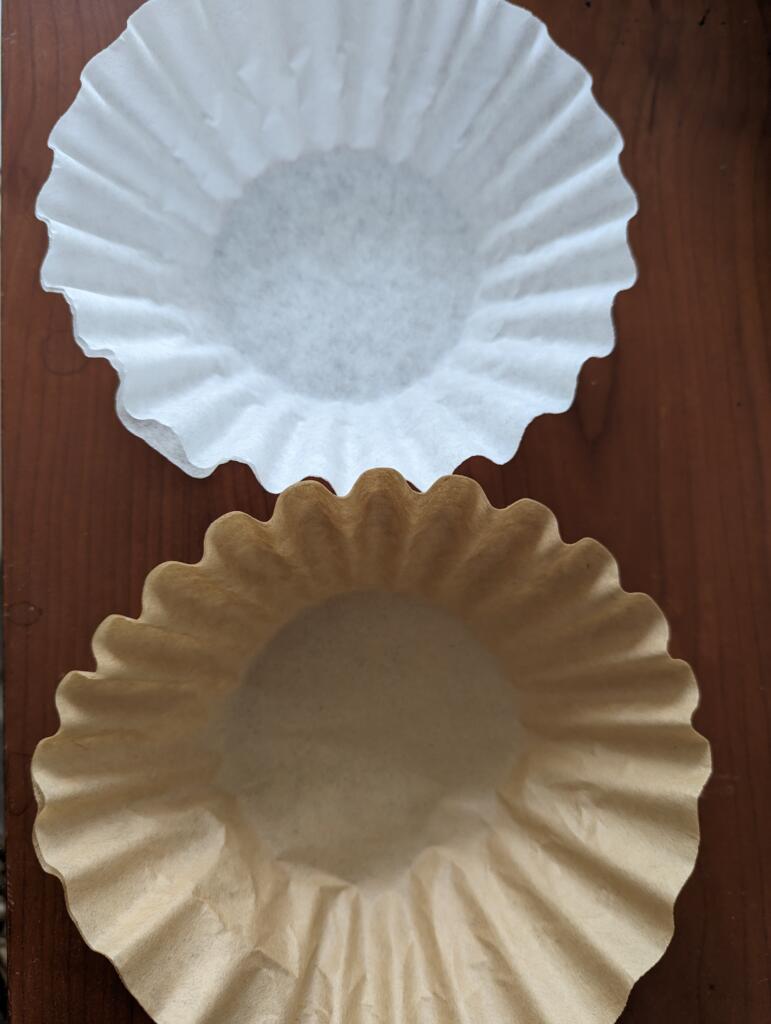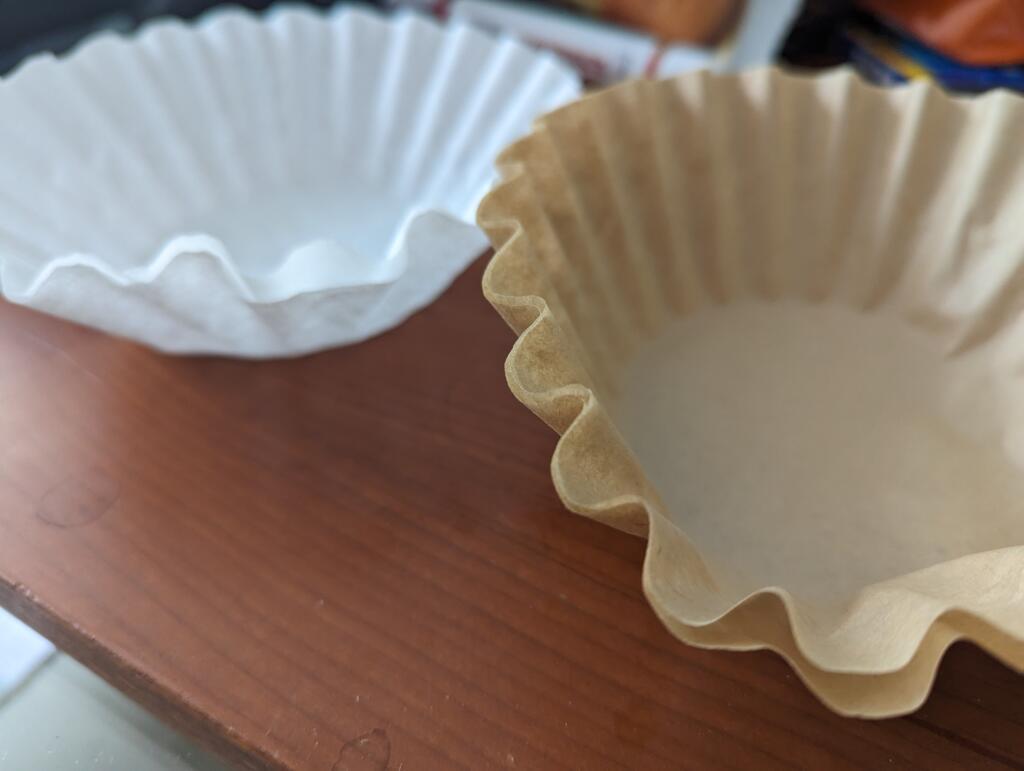If you’re a coffee enthusiast, you know that the best cup of joe starts with the right filter. But what’s the difference between bleached and unbleached filters?
Table Of Contents
−- What are Bleached Coffee Filters?
- What are Unbleached Coffee Filters?
- The difference in taste between bleached and unbleached filters
- What is the difference in color between filter types?
- Why You Should Rinse Both Bleached and Unbleached Filters
- How to properly rinse your coffee filters
- Why Unbleached Filters Are Friendlier to the Environment
- What is Used to Bleach Coffee Filters?
- The Pros and Cons of Bleached vs. Unbleached Coffee Filters
In this blog post, we’ll look at both types of filters and discuss which is best for you. So grab your favorite mug, and let’s get started!

What are Bleached Coffee Filters?
Bleached coffee filters are paper filters that have been whitened using either chlorine or oxygen during manufacturing. Unbleached coffee filters are not treated with any bleaching agent and remain a light brown, natural wood-like color.
Although bleaching coffee filters are purely for cosmetic reasons, it is important to note that they contain a tiny concentration of a toxin called dioxin. However, these bleached coffee filters are safe because the bleach concentration is minimal.
What are Unbleached Coffee Filters?
Unbleached coffee filters are strainers used for pour-overs and serve the same purpose as bleached ones. They don’t necessarily brew a better-tasting cup of Joe, but they are friendlier to the environment as they are less processed than bleached filters.
Unbleached paper is light brown, so that you won’t get that bright white color like in bleached ones. Unbleached filters also leave a papery taste in your brew if not rinsed properly.
That’s why it’s best to rinse your unbleached filters just like you would with bleached ones. Natural or “unbleached” filters are not treated with any bleaching agent and maintain their natural wood-like color.
The difference in taste between bleached and unbleached filters
Though many may disagree, there is no noticeable difference in taste between bleached and unbleached filters. Unbleached filters can leave a papery taste if not rinsed properly. It’s best to rinse both filters before use to ensure you get the best flavor possible from your cup of joe.
What is the difference in color between filter types?

It is important to note that bleached coffee filters are whitened, while unbleached filters are light brown. This color difference is due to the bleaching process used to whiten the paper. Unbleached filters don’t require additional processing and remain their natural shade of light brown.
Brown filters are made from unbleached paper and are a natural dark tan. White coffee filters have been chemically bleached or using an oxygen bleaching process to turn them white from the paper’s natural brown color.
As a result, many people prefer unbleached filters since they are less processed than their bleached counterparts. Furthermore, the lighter color of bleached filters may affect the taste of your coffee, although this is not always the case. Therefore, it is important to consider the color difference when choosing between bleached and unbleached coffee filters.
Why You Should Rinse Both Bleached and Unbleached Filters
While unbleached filters don’t necessarily brew a better-tasting cup of Joe, they are friendlier to the environment. They are, for one, less processed compared to bleached filters. But that doesn’t mean you shouldn’t rinse them before using them.
Both bleached and unbleached filters should be rinsed to prevent any taste or odor from the filter from affecting your coffee.
How to properly rinse your coffee filters
To ensure your coffee is not ruined, you should rinse each filter for at least 20 seconds. Once your filter has been rinsed, discard the water and allow the filter to air dry before use. This will help ensure the coffee flavor is not affected by any residual chemicals used in the bleaching process.
Why Unbleached Filters Are Friendlier to the Environment
Unbleached coffee filters are the better choice when it comes to being more friendly to the environment. Unbleached filters require fewer chemicals in their manufacture, making them more natural and easier to dispose of. In addition, unbleached filters are thicker than bleached filters, making them ideal for brewing a better cup of coffee.
Furthermore, unbleached filters don’t require additional whitening agents like bleach, which can be toxic and dangerous to the environment. So if you’re looking for a more environmentally friendly filter for your coffee brewing needs, unbleached coffee filters are the way to go.
What is Used to Bleach Coffee Filters?
The bleaching process to whiten coffee filters can be done with either chlorine or oxygen. Bleaching with chlorine is the most common and economical method, while oxygen bleaching is more environmentally friendly. It’s important to note that both methods are safe if done correctly.
No matter which bleaching process is used, a small amount of bleach is used, so there won’t be any noticeable difference in taste between bleached and unbleached filters.
The Pros and Cons of Bleached vs. Unbleached Coffee Filters
Understanding the advantages and disadvantages of both bleached and unbleached coffee filters is important before deciding which one is right for you.
- Bleached coffee filters are cheaper than unbleached, but they can leave a papery taint in your cup of coffee.
- Unbleached coffee filters are more eco-friendly, but they can be more expensive.
It is important to rinse both types of filters before use to prevent any unwanted flavors from entering your cup.
After weighing the pros and cons, you can decide which filter type is right for you. The alternative is to use a permanent coffee filter instead.
Disclaimer: This post contains affiliate links, which means I may receive a small commission, at no extra cost to you, if you make a purchase using these links. Remember to support us by purchasing through the Amazon/Walmart/Impact Radius links provided. Last update on 2024-04-18 / Affiliate links / Images from Amazon Product Advertising API
Disclosure: No compensation or free products were received in exchange for writing this review.

Editorial Staff
The editorial staff at Crazy Coffee Crave is a team of coffee enthusiasts & Baristas who enjoy the one thing we all think about as soon as we get up in the morning. Trusted by thousands of readers worldwide.





